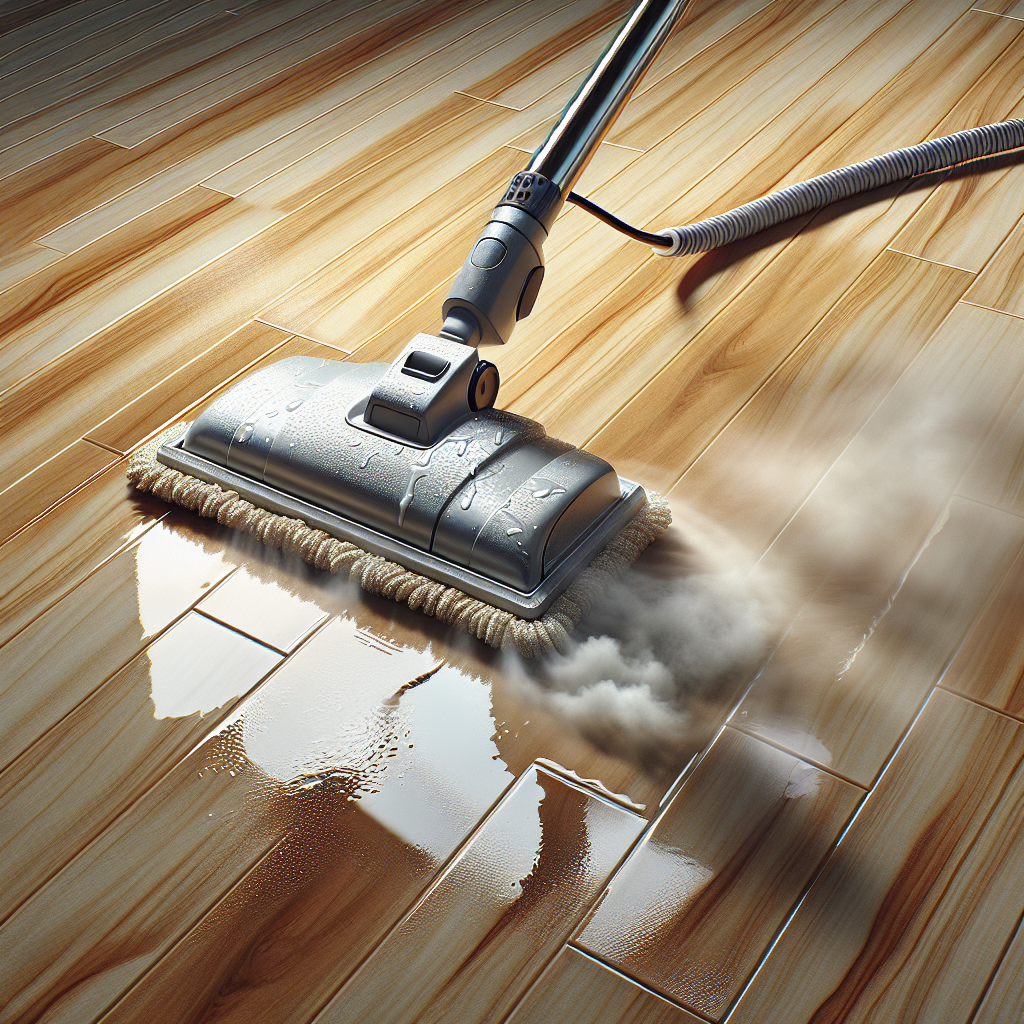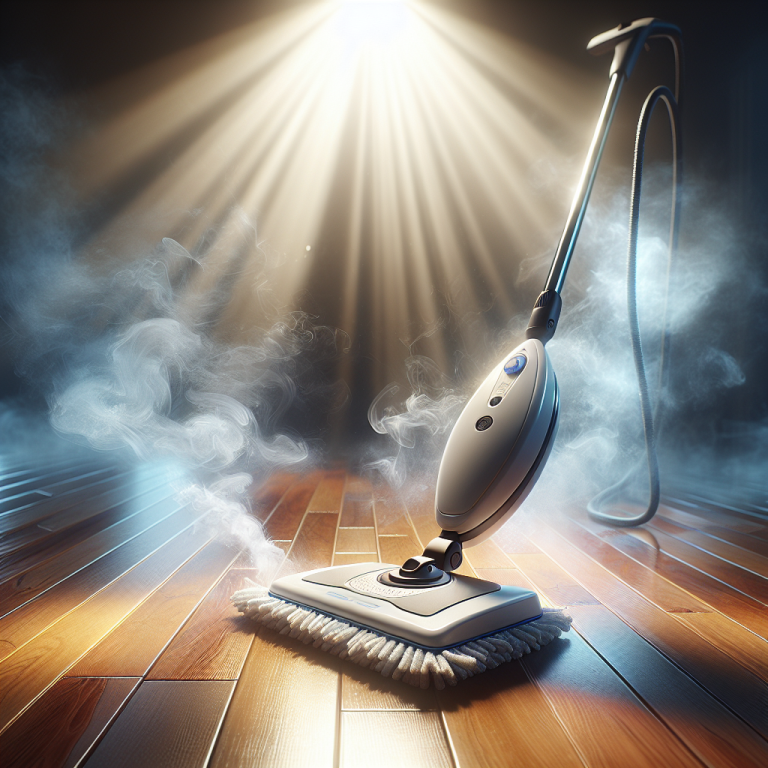Can Steam Mops Be Used On Laminate Flooring?
If you’ve ever found yourself pondering whether it’s safe to use a steam mop on your beloved laminate flooring, you’re not alone. With concerns about potential damage or warping, it’s vital to be well-informed before embarking on any cleaning venture. In this article, we’ll explore the question on everyone’s mind: can steam mops be used on laminate flooring? Prepare to discover the dos and don’ts, as well as helpful tips to keep your laminate floors gleaming and pristine. So, let’s leave the guesswork behind and delve into the world of steam mops and laminate flooring.
Understanding Laminate Flooring
Laminate flooring is an increasingly popular choice among homeowners due to its affordability, durability, and aesthetic appeal. It is a synthetic flooring product that closely mimics the appearance of hardwood or stone, but at a fraction of the cost. Laminate flooring consists of multiple layers that are fused together through a lamination process. These layers typically include a wear layer, a decorative layer, a core layer, and a backing layer.
The wear layer is the topmost layer of laminate flooring and it is responsible for protecting the floor from scratches, stains, and fading. The decorative layer is the layer that gives laminate flooring its characteristic wood or stone appearance. This layer is created by printing a high-resolution image onto the flooring material. The core layer, usually made of high-density fiberboard (HDF), provides stability and strength to the flooring. Finally, the backing layer helps to prevent moisture from seeping into the laminate flooring.
Laminate flooring is commonly used in residential settings, such as living rooms, bedrooms, and hallways. It provides a cost-effective alternative to hardwood flooring and is suitable for areas with moderate foot traffic. However, it is important to note that laminate flooring is not suitable for areas with high moisture levels, such as bathrooms or laundry rooms, as prolonged exposure to moisture can cause the floor to warp or expand.
Characteristics of Steam Mops
Steam mops have gained popularity in recent years as an alternative cleaning method for various types of flooring, including laminate. These innovative cleaning tools use steam to sanitize and remove dirt and grime from floors. Steam mops typically have a built-in water tank and a heating element that converts the water into steam. The steam is then released onto the floor through a microfiber pad, which helps to loosen and lift dirt and stains.
One of the key features of steam mops is their ability to effectively kill bacteria and sanitize floors without the need for harsh chemicals. The high temperature of the steam is capable of disinfecting the floor surface, making it an ideal choice for households with infants, pets, or those with allergies or sensitivities to chemical cleaners. Additionally, steam mops are generally lightweight and easy to maneuver, making the cleaning process quick and convenient.
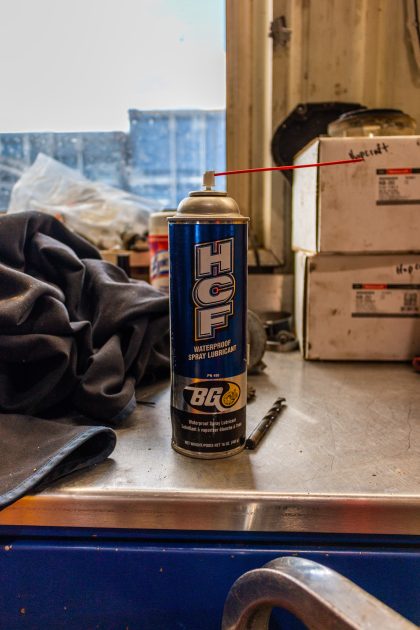
Potential Compatibility Between Laminate Flooring and Steam Mops
While steam mops offer numerous benefits for cleaning, there are certain considerations to keep in mind when using them on laminate flooring. In general, laminate flooring and steam mops can be used together in specific scenarios, but caution must be exercised to prevent any potential damage to the flooring.
The primary concern with using steam mops on laminate flooring is the risk of moisture damage. Laminate flooring is susceptible to warping and swelling when exposed to excessive moisture. Since steam mops produce moisture in the form of steam, there is a possibility that prolonged or excessive use of steam mops may result in damage to the laminate flooring. Therefore, it is important to be aware of the manufacturer’s recommendations and limitations for your specific laminate flooring product.
To gain insights regarding the compatibility between laminate flooring and steam mops, it is advisable to consult flooring and cleaning experts. They can assist in determining whether the specific type and quality of your laminate flooring can withstand the use of steam mops. Additionally, they may provide recommendations on the frequency and duration of steam mop use to minimize any potential risks.
Risks of Using Steam Mops on Laminate Flooring
It is essential to understand the risks associated with using steam mops on laminate flooring in order to make an informed decision. The primary risk is the potential damage caused by moisture. As previously mentioned, laminate flooring can warp or swell when exposed to excessive moisture. The steam produced by steam mops introduces moisture to the floor, which can seep into the joints and weaken the integrity of the laminate.
In addition to moisture damage, the repeated use of steam mops on laminate flooring can gradually degrade the protective wear layer of the laminate. The high temperature and constant contact of the hot steam against the laminate surface may cause the wear layer to deteriorate over time. This can result in the flooring becoming more susceptible to scratches, stains, and fading, ultimately reducing its lifespan.
Furthermore, the long-term consequences of repeated steam mop use on laminate flooring may also include the breakdown of the bonding agents used in the lamination process. The adhesive used to bind the layers of laminate flooring together, including the wear layer, may gradually weaken under the heat and moisture generated by steam mops. This can compromise the overall integrity and stability of the flooring, leading to delamination and an unsightly appearance.
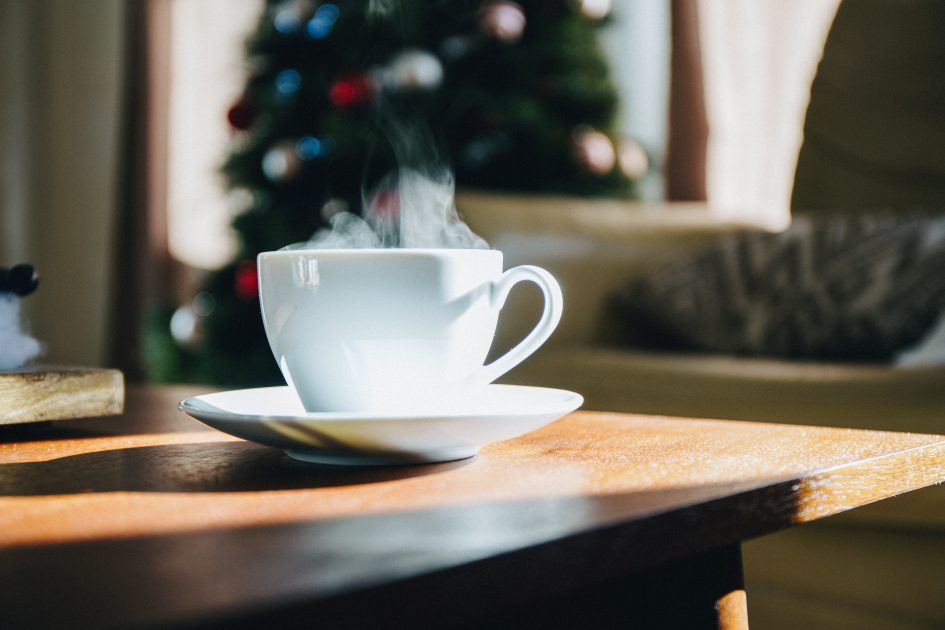
When to Use a Steam Mop on Laminate Flooring
While the risks of using steam mops on laminate flooring are noteworthy, there are certain circumstances in which steam mop use may be considered safe. To help determine whether it is appropriate to use a steam mop on your laminate flooring, it is important to identify specific safe scenarios and take necessary precautions.
Safe scenarios for using a steam mop on laminate flooring include situations where the laminate has a strong moisture barrier and is appropriate for wet cleaning methods. Some laminate flooring manufacturers design their products to be more resistant to moisture, making them better suited for steam mop use. Additionally, laminate flooring installed in areas where moisture exposure is minimal, such as bedrooms or living rooms, may be less susceptible to damage from steam mops.
Before proceeding with the use of a steam mop on your laminate floor, it is crucial to take precautionary measures to minimize risks. This includes ensuring that your laminate flooring is properly installed and has an intact moisture barrier. It is also important to familiarize yourself with the manufacturer’s guidelines regarding steam mop use, as they may have specific recommendations or limitations for their product. Following these guidelines and taking necessary precautions will help protect your laminate flooring during the cleaning process and reduce the risk of damage.
After using a steam mop on laminate flooring, it is advisable to implement post-steam mop cleaning practices to maintain the condition of your flooring. This may involve using a microfiber cloth or mop to wipe the floor surface and remove any excess moisture or residue. Properly ventilating the room and allowing the floor to thoroughly dry after steam mop use will also help prevent moisture-related issues.
Alternative Cleaning Methods for Laminate Flooring
If you decide against using a steam mop on your laminate flooring, there are alternative cleaning methods that are equally effective and safe. Dry mopping or vacuuming is a simple and efficient way to remove loose dirt, dust, and debris from the surface of the laminate floor. This method is particularly useful for regular maintenance and can be performed as frequently as needed to keep your laminate flooring looking clean and well-maintained.
In addition to dry mopping and vacuuming, the use of specialized laminate floor cleaners is also recommended. These cleaners are specifically formulated to clean and protect laminate flooring without causing any damage. They are designed to effectively remove stains, restore shine, and maintain the overall appearance of the laminate surface. When using laminate floor cleaners, it is important to follow the manufacturer’s instructions for proper application and ensure that any excess cleaner or residue is thoroughly removed.
Proper cleaning techniques for laminate flooring should also be observed to avoid unnecessary damage. When mopping the floor, it is advisable to dampen the mop rather than soaking it in water. Excess water can seep into the joints of the laminate and cause swelling or warping. Additionally, using a pH-neutral cleaner that is compatible with laminate flooring will help preserve its original beauty and protect the surface from potential harm.

Comparison Between Steam Mops and Traditional Mops
When considering different cleaning methods for laminate flooring, it is helpful to compare the efficiency and potential for damage between steam mops and traditional mops. Traditional mops typically involve the use of water or a cleaning solution, combined with physical effort to scrub the floor. While this method can effectively remove dirt and stains, it may not provide the same level of sanitization as steam mops due to the absence of high-temperature steam.
In terms of potential damage to the flooring, traditional mops have a lower risk compared to steam mops. When used properly, traditional mops with a dampened mop head or microfiber cloth can minimize the amount of moisture introduced to the laminate floor. However, excessive water or inadequate wringing of the mop can still lead to moisture-related issues over time.
In terms of cost, traditional mops are generally more affordable compared to steam mops. Traditional mops can be easily found at various price points and replacement mop heads or cleaning solutions are widely available. On the other hand, steam mops are generally more expensive upfront, and maintenance costs may include the purchase of replacement microfiber pads or descaling solutions for the water tank.
Maintaining Your Laminate Flooring
While discussing the compatibility between steam mops and laminate flooring, it is important to consider overall maintenance practices to ensure the longevity of your laminate floors. Following best practices for long-lasting laminate floors will help maintain their appearance and structural integrity.
One of the key factors in maintaining laminate flooring is preventing scratches and damage to the wear layer. Placing felt pads or furniture protectors under heavy furniture and using protective mats or rugs in high-traffic areas can help prevent scratches and minimize wear. Regularly sweeping or vacuuming the floor will also remove abrasive particles that can cause scratches over time.
In the event of minor damage, such as scratches or small chips, there are methods for repairing laminate flooring. Certain manufacturers provide touch-up kits or repair solutions specifically designed for laminate floors. These products can help conceal minor imperfections and restore the appearance of the flooring. However, for more extensive damage, it is recommended to consult a professional for repair or replacement options.
Periodic maintenance and professional cleaning of laminate floors are also beneficial. This may involve scheduling periodic deep cleaning or maintenance services to ensure that your laminate flooring remains in optimal condition. Professional cleaning can remove stubborn stains or grime that may be difficult to remove with regular cleaning methods, providing a refreshing and rejuvenating effect on your laminate flooring.
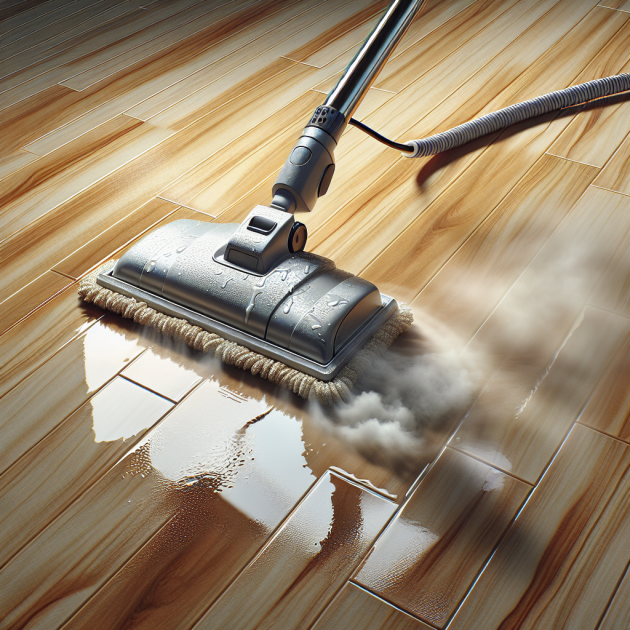
Testimonies and Reviews on Using Steam Mops on Laminate Flooring
To gain further insights on the usage of steam mops on laminate flooring, it is valuable to consider the experiences and recommendations of homeowners, professional cleaners, and flooring experts.
Homeowners who have used steam mops on their laminate flooring often have mixed experiences and opinions. Some homeowners report successful and hassle-free cleaning sessions with steam mops, claiming that their laminate floors have not suffered any damage. However, others have encountered issues such as warping, swelling, or delamination of the laminate flooring after using steam mops. It is important to consider the specific laminate flooring product, manufacturer’s recommendations, and individual circumstances when evaluating these testimonies.
Professional cleaners, on the other hand, tend to exercise caution when using steam mops on laminate flooring. They acknowledge the potential risks associated with moisture damage and advise homeowners to consult with flooring experts or manufacturers before using steam mops. Professional cleaners recognize that each laminate flooring product may have unique characteristics and limitations, which should be taken into account when deciding on the appropriate cleaning method.
Flooring experts generally advise against the use of steam mops on laminate flooring, highlighting the potential risks involved. They emphasize the importance of maintaining the moisture barrier of the laminate flooring and caution against excessive or prolonged exposure to steam. Flooring experts also suggest alternative cleaning methods that are specifically designed for laminate flooring to ensure its longevity and prevent damage.
Conclusion: Weighing the Pros and Cons of Using Steam Mops on Laminate Flooring
In conclusion, the use of steam mops on laminate flooring requires careful consideration and evaluation of the pros and cons. While steam mops offer a convenient and effective cleaning method, there are potential risks associated with moisture damage and the degradation of laminate flooring. It is important for homeowners to assess their specific laminate flooring product, consult with flooring and cleaning experts, and understand the manufacturer’s recommendations before deciding on the suitability of using a steam mop.
By weighing the risks and benefits, homeowners can make an informed decision and choose the most appropriate cleaning method for their laminate flooring. Dry mopping, vacuuming, and the use of specialized laminate floor cleaners are effective alternatives that provide similar results without the potential risks associated with steam mops. Implementing proper cleaning techniques and periodic maintenance will help preserve the beauty and longevity of laminate flooring, ensuring its continued durability and aesthetic appeal.

